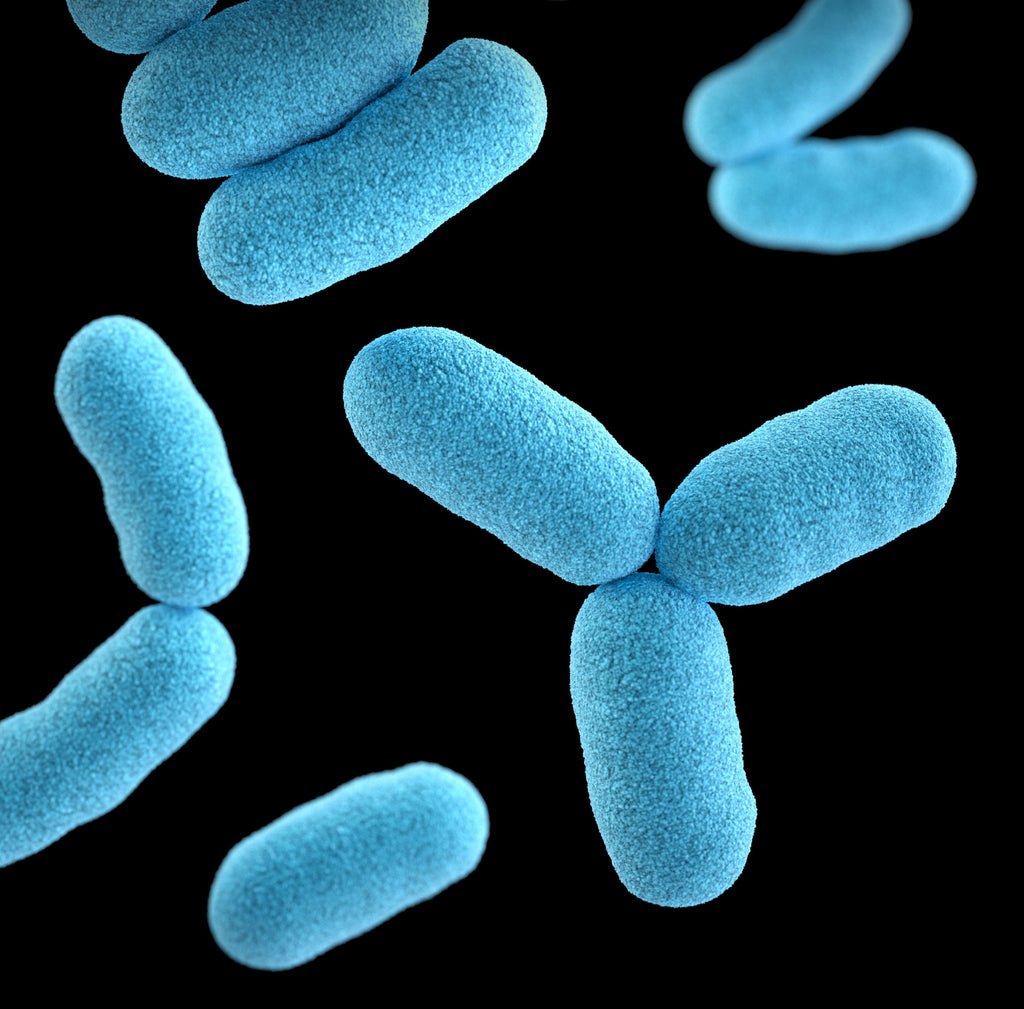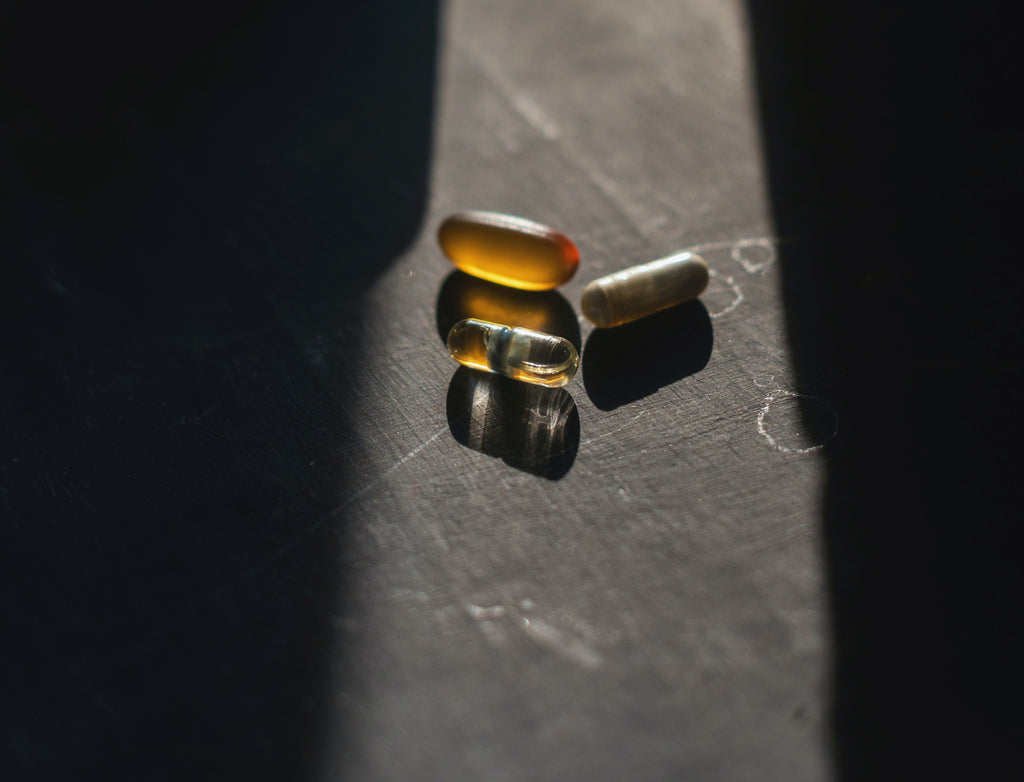Biofilms are a common component of bacterial infections, which if left untreated, can lead to serious conditions such as candida, skin issues, pneumonia, various toxicities and more. Currently, standard practice is to treat bacterial infections with antibiotics. However, antibiotics have little effect on microorganisms contained in biofilms. This is a major problem as The National Institute of Health states that more than 8 percent of human bacterial infections involve biofilms. Fortunately, there may be an alternative to the antibiotic approach.
What is Biofilm X?
Biofilm X is a supplemental product that has antimicrobial, antifungal, antiviral, antiparasitic, and antibacterial qualities. These attributes help protect the gastrointestinal system, which houses the majority of the immune system. The large surface area and flow of nutrients through the GI tract make this a common site for biofilm development. Biofilm X helps prevent biofilm construction and supports elimination of already established biofilms.
What Are Biofilms?
Most bacteria in the body exist in communities called biofilms. Studies state that up to 80 percent of pathogens capable of forming biofilms are associated with infections that are notoriously difficult to treat. Creation of a biofilm involves bacterial attachment to a surface, often in the gastrointestinal tract, and subsequently acquiring minerals such as calcium, magnesium and iron to create a framework. Multiple organisms including fungi, yeasts, bacteria, algae, protozoa, and viruses are capable of constructing biofilms.
Typically, biofilms are composed of a community of various substances. Biofilm cohabitants actively protect each other, which significantly increases the biofilm’s resiliency. Microorganisms within a biofilm may share DNA and nutrients facilitating changes in composition that limits the body’s natural immune response to them. Furthermore, Biofilms protect themselves from the immune system by creating a physical barrier that inhibits the its ability to recognize the biofilm as a threat.
How to Beat Biofilms
Biofilms have multiple characteristics that make them physically, chemically, and genetically resilient to antibiotics. Thus, the standard approach of treating infections with antibiotics is often not suitable when biofilms are involved. Worse still, extended or improper use of antibiotics can cause greater damage to the body’s natural defenses and exacerbate the issue. Therefore, an alternate approach must be taken to effectively combat biofilms.
To effectively treat biofilms several steps must be completed: break through the biofilm’s defenses, destroy the pathogenic bacteria it contains, and remove any lingering matrix, DNA, and/or minerals. Antibiotic treatments alone are often not enough to accomplish these goals. Research shows that biofilms may be better dealt with through the use of certain essential oils. Compounds found in thyme oil, clove oil, and oregano oil have all shown promise as powerful biofilm combatants. An easy method of incorporating these ingredients into your treatment protocol is by taking Biofilm X.
What’s in Biofilm X?
Biofilm X is composed of essential oils derived from natural thyme, clove, and oregano. The essential oils acquired from these different plants provide a wide range of benefits. Most notably, these oils help eliminate existing biofilms and protect against growth of harmful microorganisms, fungi, and bacteria associated with biofilm development.In contrast to antibiotics, the natural oils found in Biofilm X do not disrupt healthy bacterial growth. Instead, the chemical action of the oils interacts primarily with the pathogens responsible for biofilm creation. This aspect significantly reduces the risk of patients becoming resistant to therapies containing these beneficial oils.
Each of the ingredients found in Biofilm X provide specific benefits regarding biofilm removal, prevention, and immune support.
Thyme Oil (Thymol)
Studies show that thymol, an active component found in thyme oil, provides exceptional protection against bacteria associated with biofilms. It is believed that thymol disrupts biofilm formation and reduces infection intensity by limiting chemical communication between specific microorganisms in a large collection of biofilms. A study found that the rpfE gene, well recognized as playing an important role in the strength and resiliency of biofilms, was significantly reduced through thymol treatments. Other studies confirmed that thymol is able to bind with the rpfE gene, thereby reducing the virulence of biofilms. Increasing thymol prevalence through use of a supplement like Biofilm X can reduce the symptom severity of biofilm-related infections while also limiting biofilm resiliency.
Clove Oil (Eugenol)
A compound called eugenol, found in clove oil, may have an impressive inhibitory effect on biofilm formation. Studies suggest that the elevated eugenol content of clove oil is primarily responsible for its powerful anti-biofilm effects. Studies show that three eugenol derivatives, isoeugenol, 2-methoxy-4-propylphenol, and 4-ethylguaiacol presented notable antibiofilm activity. It is posited that eugenols inhibit specific bacterial genes that are necessary for biofilm formation and attachment One study examined the effect of 83 essential oils and found that of those tested, clove oil was one of the most effective biofilm inhibitors. Prevention of biofilm development and reducing infection conveyance may be accomplished by using a eugenol-containing supplement such as Biofilm X.
Oregano Oil (Carvacrol)
Oregano oil contains carvacrol, a substance which significantly inhibits biofilm formation even at smaller doses. Studies show that a primary benefit of taking carvacrol at a regulated level is that it limits biofilm activity without inhibiting immune function. Research also shows that carvacrol may be able to reduce the strength and mobility of biofilm-related substances. These attributes help prevent the spread of biofilms and their development. Carvacrol also disrupts biofilm defenses thereby increasing the immune system’s ability to eliminate biofilms. Increasing your level of carvacrol can be done by taking Biofilm X.
Combat Biofilms with Biofilm X
Biofilms are a common factor in recurrent and difficult to treat infections. Typically, such infections are treated with antibiotics. However, antibiotics have little impact on infections caused by biofilms. Furthermore, repeated and reckless use of antibiotics can actually inhibit immune function and worsen the severity of such infections. Therefore, effectively combating biofilms requires a different approach. Multiple studies show that ingredients found in HoltraCeuticals’ Biofilm X, such as thymol, eugenol, and carvacrol, have impressive anti-biofilm benefits. Taking Biofilm X may lead to biofilm destruction, pathogen removal, and matrix dissolution. Help your immune system eliminate lingering infections by taking Biofilm X.
Resources
1. J.‐H. Lee, Y.‐G. Kim, J. Lee. “Carvacrol‐rich oregano oil and thymol‐rich thyme red oil inhibit biofilm formation and the virulence of uropathogenic Escherichia coli.” https://doi.org/10.1111/jam.13602
2. Jia Xue P. Michael Davidson Qixin Zhong. “Antimicrobial activity of thyme oil co-nanoemulsified with sodium caseinate and lecithin.” International Journal of Food Microbiology, Volume 210, 1 October 2015, Pages 1-8.
3. M.C. Manganyi, T. Regnier, E.I. Olivier. “Antimicrobial activities of selected essential oils against Fusarium oxysporum isolates and their biofilms.” South African Journal of Botany, Volume 99, July 2015, Pages 115-121.
4. Kim, Yong-Guy et al. “Essential Oils and Eugenols Inhibit Biofilm Formation and the Virulence of Escherichia coli O157:H7.” Scientific reports vol. 6 36377. 3 Nov. 2016, doi:10.1038/srep36377.
5. Kavanaugh, Nicole L and Katharina Ribbeck. “Selected antimicrobial essential oils eradicate Pseudomonas spp. and Staphylococcus aureus biofilms.” Applied and environmental microbiology vol. 78,11 (2012): 4057-61.
6. Algburi, Ammar et al. “Control of Biofilm Formation: Antibiotics and Beyond.” Applied and environmental microbiology vol. 83,3 e02508-16. 17 Jan. 2017, doi:10.1128/AEM.02508-16.
7. Singh, Akanksha et al. “Thyme Oil Reduces Biofilm Formation and Impairs Virulence of Xanthomonas oryzae.” Frontiers in microbiology vol. 8 1074. 13 Jun. 2017, doi:10.3389/fmicb.2017.01074.
8. Chris Kresser. “Biofilm: What It Is and How to Treat It.” Kresser Institute.





